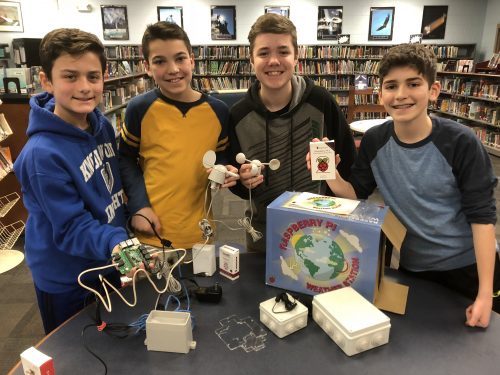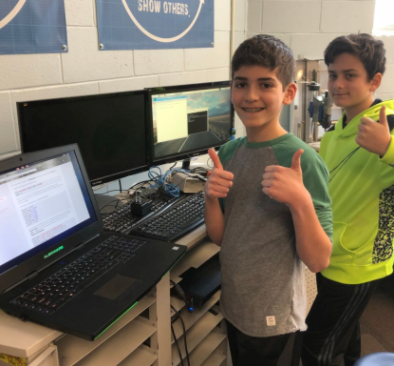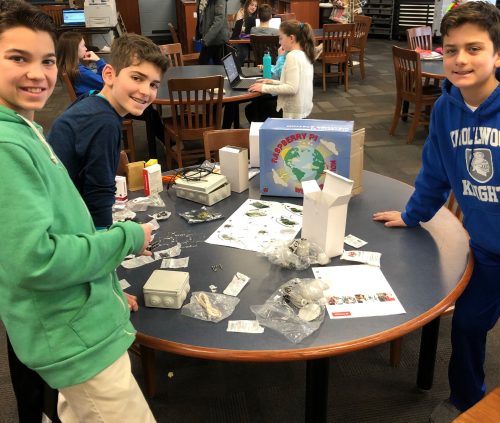In today’s guest post, seventh-grade students Evan Callas, Will Ross, Tyler Fallon, and Kyle Fugate share their story of using the Raspberry Pi Oracle Weather Station in their Innovation Lab class, headed by Raspberry Pi Certified Educator Chris Aviles.

United Nations Sustainable Goals
The past couple of weeks in our Innovation Lab class, our teacher, Mr Aviles, has challenged us students to design a project that helps solve one of the United Nations Sustainable Goals. We chose Climate Action. Innovation Lab is a class that gives students the opportunity to learn about where the crossroads of technology, the environment, and entrepreneurship meet. Everyone takes their own paths in innovation and learns about the environment using project-based learning.

Raspberry Pi Oracle Weather Station
For our climate change challenge, we decided to build a Raspberry Pi Oracle Weather Station. Tackling the issues of climate change in a way that helps our community stood out to us because we knew with the help of this weather station we can send the local data to farmers and fishermen in town. Recent changes in climate have been affecting farmers’ crops. Unexpected rain, heat, and other unusual weather patterns can completely destabilize the natural growth of the plants and destroy their crops altogether. The amount of labour output needed by farmers has also significantly increased, forcing farmers to grow more food on less resources. By using our Raspberry Pi Oracle Weather Station to alert local farmers, they can be more prepared and aware of the weather, leading to better crops and safe boating.

Growing teamwork and coding skills
The process of setting up our weather station was fun and simple. Raspberry Pi made the instructions very easy to understand and read, which was very helpful for our team who had little experience in coding or physical computing. We enjoyed working together as a team and were happy to be growing our teamwork skills.
Once we constructed and coded the weather station, we learned that we needed to support the station with PVC pipes. After we completed these steps, we brought the weather station up to the roof of the school and began collecting data. Our information is currently being sent to the Initial State dashboard so that we can share the information with anyone interested. This information will also be recorded and seen by other schools, businesses, and others from around the world who are using the weather station. For example, we can see the weather in countries such as France, Greece and Italy.

Raspberry Pi allows us to build these amazing projects that help us to enjoy coding and physical computing in a fun, engaging, and impactful way. We picked climate change because we care about our community and would like to make a substantial contribution to our town, Fair Haven, New Jersey. It is not every day that kids are given these kinds of opportunities, and we are very lucky and grateful to go to a school and learn from a teacher where these opportunities are given to us. Thanks, Mr Aviles!
To see more awesome projects by Mr Avile’s class, you can keep up with him on his blog and follow him on Twitter.
Website: LINK
